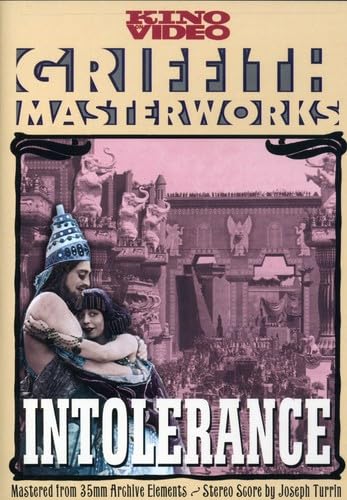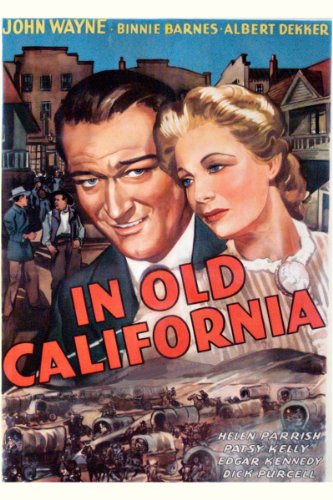D.W. Griffith is widely considered one of the most important figures in the history of American cinema, known for his innovative and influential filmmaking techniques.
He is best known for his epic silent films, which often tackled important social and political issues and helped lay the foundations for modern American cinema.
Whether you are a fan of silent films or just interested in the history of American cinema, the works of D.W. Griffith are a must-watch.
Best D.W. Griffith Films
Some of D.W. Griffith’s most highly regarded movies include:
1. The Birth of a Nation (1915)
“The Birth of a Nation” (1915) is a seminal film directed by D.W. Griffith and widely considered one of the most important and influential films in the history of American cinema.
The film is a sweeping epic that depicts the American Civil War and its aftermath, focusing on the experiences of two families, one Northern and one Southern. The film is noted for its imaginative storytelling, advanced camera techniques, and sweeping cinematography, which helped to set the standards for future Hollywood productions.
However, the film is also infamous for its blatantly racist depiction of African Americans, which has led to widespread criticism and controversy over the years.
Overall, “The Birth of a Nation” is a complex and controversial film that remains a must-watch for anyone interested in the history of American cinema, but its racist content must be acknowledged and condemned.
- Amazon Prime Video (Video on Demand)
- Lillian Gish, Mae Marsh, Henry B. Walthall (Actors)
- D.W. Griffith (Director) - Thomas Dixon Jr. (Writer) - H.E. Aitken (Producer)
- (Playback Language)
- Audience Rating: NR (Not Rated)
2. A Corner in Wheat (1909)
“A Corner in Wheat” (1909) is a short film directed by D.W. Griffith that is considered one of the earliest examples of his innovative and influential style.
The film tells the story of a wealthy financier who tries to corner the market on wheat, leading to a food shortage and widespread hunger among the working-class population.
The film is notable for its imaginative storytelling, advanced camera techniques, and moralistic tone, which helped to establish Griffith as a major talent in the early days of American cinema.
Overall, “A Corner in Wheat” is an important film that provides insight into the early development of American cinema and the innovations that would shape the industry for decades to come.
- Factory sealed DVD
- Ralph Lewis, Frank Powell, Henry B. Walthall (Actors)
- Emory Johnson (Director)
- English (Publication Language)
- Audience Rating: NR (Not Rated)
3. Way Down East (1920)
“Way Down East” (1920) is a silent film directed by D.W. Griffith that is considered one of his best and most enduring works.
The film is a romantic melodrama set in rural New England, and tells the story of a young woman who is seduced and abandoned by a wealthy city slicker.
The film is noted for its strong acting, especially by its leading lady, Lillian Gish, who delivers a powerful and emotionally charged performance.
The film also features impressive visual effects, including a memorable ice floe sequence, and is widely considered one of the best examples of early American cinema.
If you like Dw Griffiths’s work, on our sister site AuteurGraph we have a profile page, a visual film timeline, and a ratings page that gives a tonne of info and data about their career in a visualized form.
Overall, “Way Down East” is an important film that showcases the talents of D.W. Griffith and demonstrates the power of early American cinema to tell compelling and emotionally engaging stories.
- Lillian Gish, Richard Barthelmess (Actors)
- D.W. Griffith (Director)
- English (Publication Language)
- Audience Rating: NR (Not Rated)
4. The Musketeers of Pig Alley (1912)
“The Musketeers of Pig Alley” (1912) directed by D.W. Griffith is a silent film and considered as one of the earliest examples of the gangster film genre.
The film follows the story of a young woman who is being targeted by gangsters and is saved by a musketeer.
The film showcases Griffith’s storytelling skills, showcasing his mastery of visual storytelling.
The film’s cinematography, which utilized cross-cutting, was also groundbreaking for its time.
The film’s social commentary on gang violence and poverty was ahead of its time. Overall, “The Musketeers of Pig Alley” is a historic and noteworthy film that influenced future filmmakers in the gangster film genre.
- Amazon Prime Video (Video on Demand)
- Elmer Booth, Lillian Gish, Robert Harron (Actors)
- D. W. Griffith (Director) - D. W. Griffith (Writer)
- (Playback Language)
- Audience Rating: NR (Not Rated)
5. The Adventures of Dollie (1908)
“The Adventures of Dollie” (1908) directed by D.W. Griffith is a silent film and one of the first narrative films produced by the director.
The film follows the story of a young girl who is kidnapped by gypsies and is rescued by a young man. The film showcases Griffith’s early skills in visual storytelling and was praised for its use of cross-cutting and parallel editing.
The film was also notable for its exploration of the gypsy lifestyle and its use of location shooting. Overall, “The Adventures of Dollie” is a historic and important film that showcases Griffith’s early directorial style and demonstrates his mastery of visual storytelling.
- Amazon Prime Video (Video on Demand)
- Arthur V. Johnson, Linda Arvidson, Gladys Egan (Actors)
- D. W. Griffith (Director) - Stanner E.V. Taylor (Writer)
- (Playback Language)
- Audience Rating: NR (Not Rated)
6. Broken Blossoms (1919)
“Broken Blossoms” (1919) directed by D.W. Griffith is a silent film that tells the story of a young Chinese man who falls in love with a British girl who is being abused by her father.
The film showcases Griffith’s storytelling skills and his use of visual storytelling. The film’s cinematography and use of light and shadow are noteworthy and helped to establish the look of Hollywood films in the early 20th century.
The film’s interracial romance was also ahead of its time. “Broken Blossoms” was a critical and commercial success and was one of the first films to address the issue of child abuse.
Overall, “Broken Blossoms” is a historic and important film that showcased Griffith’s skills as a filmmaker and helped to shape the look and feel of Hollywood films.
- Richard Barthelmess, Lillian Gish (Actors)
- D.W. Griffith (Director)
- Audience Rating: Unrated (Not Rated)
7. True Heart Susie (1919)
True Heart Susie is a silent film released in 1919, directed by D. W. Griffith. It is a romantic drama that follows the life of a young woman named Susie as she navigates through love and heartbreak.
The film is known for its powerful performances, particularly from lead actress Lillian Gish. The film is also noted for its use of innovative film techniques and its impact on the early development of the Hollywood film industry.
Despite its age, True Heart Susie remains a classic of early American cinema and is regarded as an important work in the history of film.
8. Judith of Bethulia (1914)
Judith of Bethulia is a silent film released in 1914, directed by D. W. Griffith. It is a biblical epic based on the story of Judith, a heroine from the Old Testament.
The film stars Blanche Sweet as Judith and Henry B. Walthall as Holofernes. Judith of Bethulia is regarded as one of D. W. Griffith’s most important works and is considered a landmark film in the history of American cinema.
The film’s innovative techniques and dramatic storytelling were ahead of its time and influenced the development of the film industry. Despite its age, Judith of Bethulia remains a classic of early cinema and is still watched and studied today.
- Blanche Sweet, Henry B. Walthall (Actors)
- D.W. Griffith (Director)
- English (Publication Language)
- Audience Rating: NR (Not Rated)
9. Intolerance (1916)
Intolerance is a silent film released in 1916, directed by D. W. Griffith. It is a grand epic that explores the theme of intolerance throughout history, telling four parallel stories from different eras and civilizations.
The film features an ensemble cast and was a major commercial and critical success at the time of its release.
Intolerance is considered a landmark film in the history of American cinema and is regarded as one of D. W. Griffith’s most important works.
The film’s innovative storytelling techniques, including its use of intercutting and parallel editing, greatly influenced the development of the film industry. Despite its age, Intolerance remains a classic of early cinema and is still watched and studied today.
- Factory sealed DVD
- Lillian Gish, Douglas Fairbanks, Mae Marsh (Actors)
- D.W. Griffith (Director) - Anita Loos (Writer)
- English (Publication Language)
- Audience Rating: Unrated (Not Rated)
10. In Old California (1910)
In Old California is a silent film released in 1910, directed by D. W. Griffith. It is considered to be one of the earliest examples of a Western film and is notable for its influence on the genre.
The film was shot on location in California and features a cast of pioneering actors of the time, including Antonio Moreno and Harry Carey.
In Old California is known for its beautiful cinematography and its innovative use of location shooting, which was a rarity in early American cinema.
Despite its age, the film remains a classic of early cinema and is still watched and studied today for its historical significance and its contributions to the development of the Western genre.
- Amazon Prime Video (Video on Demand)
- John Wayne, Binnie Barnes (Actors)
- William C. McGann (Director) - Gertrude Purcell (Writer) - Robert North (Producer)
- English (Playback Language)
- English (Subtitle)
3 Characteristics of D.W. Griffith Films
Innovative film techniques: D. W. Griffith is known for pioneering many of the film techniques that are now widely used in the industry, such as parallel editing, intercutting, and close-ups. He was an early master of visual storytelling and his films remain widely studied for their technical innovations.
Grand and epic storytelling: Griffith’s films often feature grand and sweeping stories that are filled with drama and emotional intensity. He was a master of creating memorable characters and capturing the essence of human struggle and triumph.
Social and political themes: Many of Griffith’s films explored social and political issues of his time, such as racism, class struggle, and the power dynamics between men and women.
He was a keen observer of human behavior and used his films to shine a light on the inequalities of his society. Despite their age, his films continue to be relevant today and are still watched and studied for their insightful commentary on human nature and the world we live in.
3 Reasons Why You Should Watch D.W. Griffith Films
Pioneer of early cinema: D. W. Griffith is widely considered to be one of the founding fathers of American cinema and is known for his innovative film techniques and storytelling methods.
Watching his films is a way to experience the beginnings of the film industry and understand the roots of modern filmmaking.
Emotional intensity and powerful storytelling: Griffith’s films are characterized by their powerful and emotional storytelling. They often feature larger-than-life characters and intense drama that captivate audiences and leave a lasting impact.
Relevant themes and commentary: Despite their age, many of Griffith’s films are still relevant today and explore important social and political themes such as intolerance, class struggle, and the power dynamics between men and women. They offer insightful commentary on human nature and the world we live in, making them well worth watching even a century after their release.
Best D.W. Griffith Films – Wrapping Up
The Birth of a Nation (1915)
Intolerance (1916)
Broken Blossoms (1919)
Way Down East (1920)
Orphans of the Storm (1921)
These are considered some of the best films by D. W. Griffith, and are regarded as landmarks of early American cinema.
They showcase Griffith’s technical innovations and his ability to tell powerful and emotional stories. These films continue to be watched and studied today for their historical significance, their impact on the film industry, and for the memorable characters and drama that they bring to the screen.






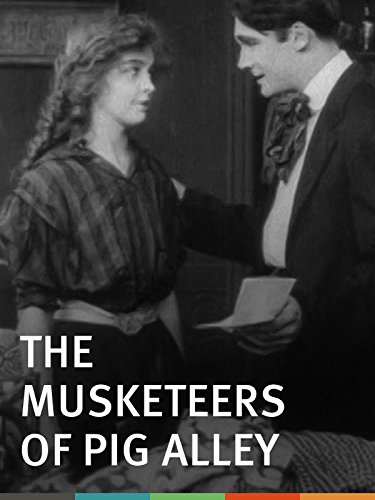
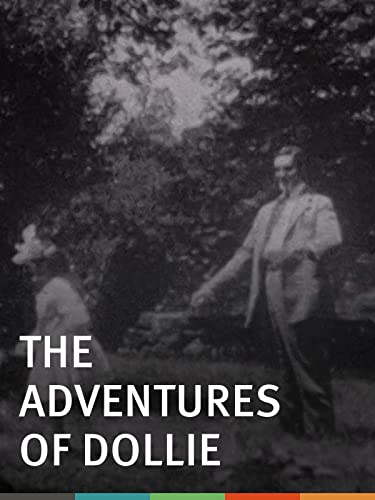


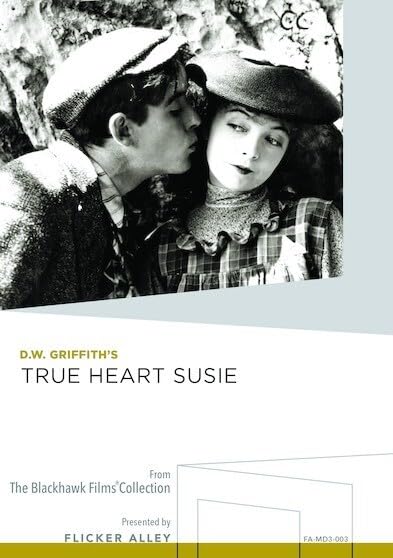
![D.W. Griffith Classics: Judith of Bethulia (1914) / The Transformation of Mike (1912) (Silent) [DVD]](https://m.media-amazon.com/images/I/51G05qjxczL.jpg)
